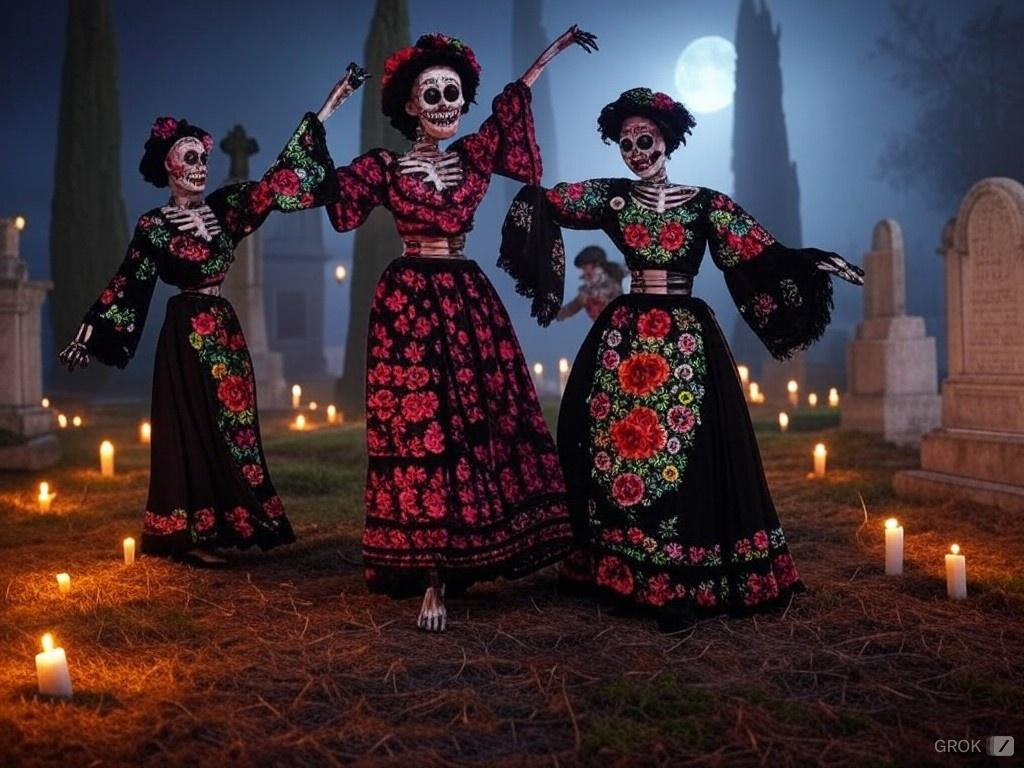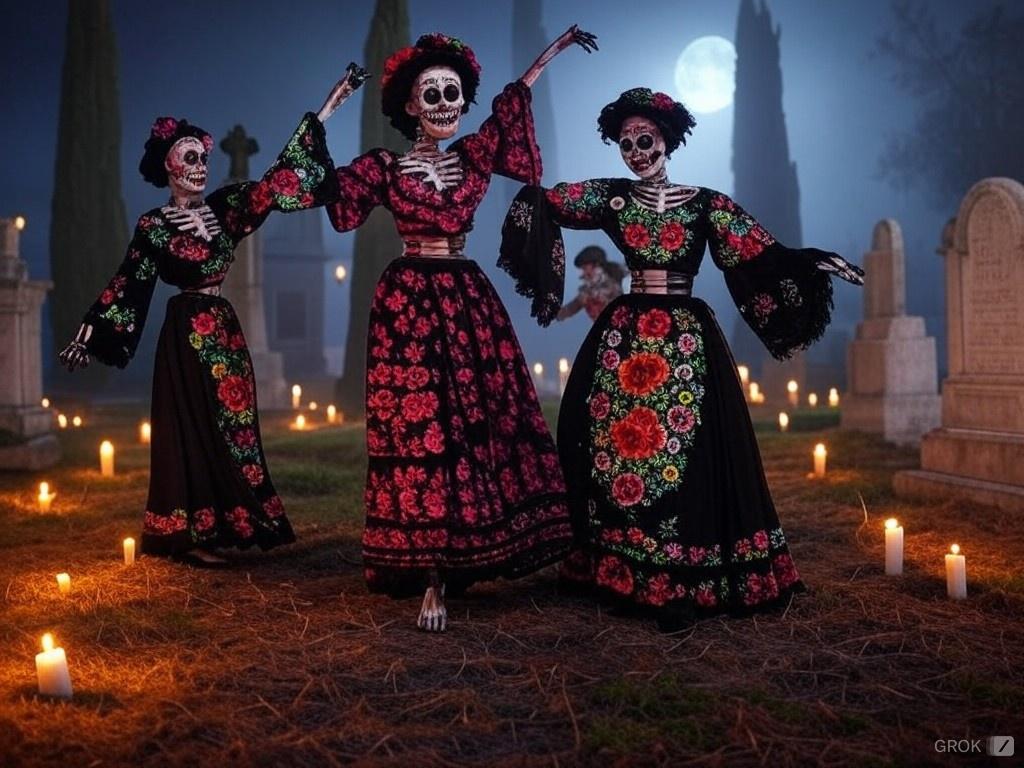J. Aaron Stanley, Composer
Huapango de los Muertos, Op. 12c for Wind Ensemble (Grade 6)
Huapango de los Muertos, Op. 12c for Wind Ensemble (Grade 6)
Couldn't load pickup availability
Huapango de los Muertos, Op. 12 for Wind Ensemble
- Instrumentation: 3.3.4.3.4, 3.4.3.1.1, T+4, Cel., Hp., Cb.
- Opus 12c (2021)
- Grade 6
- Duration: c. 7m
The huapango is a traditional Mexican dance. The 'h' is silent. The stress is on the second syllable. And the 'a' is a short, open vowel. It is so well-known in Mexico, and considered such a vital part of traditional Mexican culture, that the Mexican composer, Jose Moncayo, composed his famous (in Mexico, at least) Huapango for symphony orchestra, which to this day is immediately recognizable to nearly every Mexican, and is a celebration of Mexican culture and nationalism. The music to which the huapango is danced, son huasteco, is a common style among Mariachis and other traditional and popular music ensembles.
The famous Día de los Muertos ("Day of the Dead") is another important cultural phenomenon, not only in Mexican culture, but all over Latin America. Huapango de los Muertos imagines what it would be like if los muertos were to rise from the grave dancing the Mexican huapango to the traditional rhythms of son huasteco.
I will confess upfront that I'm 100% gringo. But I lived in Mexico for five years, where I met my beautiful Mexican wife, Rose. As a trumpet player, I've played many different Latin styles popular in Mexico, including cumbia, sonora, salsa, mariachi, and banda Sinaloense. I also heard a lot of traditional Mexican music during my time there, as well as some of Mexico's classical concert works, like Huapango by Jose Moncayo, mentioned above. Huapango de los Muertos, in a way, is my personal response to Huapango by Moncayo, and is very much informed not only by my classical music training, but my experience as a jazz musician, and as an expat in Mexico constantly hearing Mexican music.
The piece was originally born out of a commission from Dr. William Haugeberg, assistant professor of low brass at the University of Texas – Rio Grande Valley, for a piece for Bass Trombone and string quartet. Because of the heavy Mexican culture and influence in south Texas, I wanted to compose a piece that celebrated that heritage. This chamber version of the piece premiered at the International Trombone Festival on July 10, 2019.
As I was working on the chamber piece, I couldn't help but feel that it would work extremely well for symphony orchestra. So I was very thrilled to be presented with an opportunity shortly afterward to compose a piece on the theme of “dance” for the Irving Symphony Orchestra (a professional orchestra in the DFW area), which premiered in February 2020. It was the perfect opportunity to realize my vision of what Huapango de los Muertos could be.
But a good piece of music can stand on its own in many different kinds of settings, and I felt a Wind Enemble version could also work extremely well. However, it took time to come to this conclusion, since one of the inspirations of the work was the ability of both the trombone and strings to perform smooth glissandi. I wasn't convinced at first that tossing the strings would produce desirable results. Turns out I was wrong! Shortly after finishing the whirlwind of graduate school in 2021, I set about revising and reimagining the work for winds. I feel it works very well, and stands on its own with no need to know or reference the orchestral version.
Musically, the piece is a combination of the traditional and modern: traditional Mexican rhythms with some bold “jazzy” harmonies... a traditional late romantic quasi-Hollywood sound with some contemporary extended techniques to spice things up. Harmonically and melodically, the music “dances” between major and minor, adding to the macabre tone. All the melodies are original, except for two short quotes of the traditional Mexican song, "La Llorona," which was featured in the recent Disney movie, Coco, about the Día de los Muertos. Most Mexicans will immediately recognize the reference.
My goal was to write a fun, festive, and colorful piece that celebrates Mexican culture and pays homage in gratitude for my time spent there and the influence it had on me. My hope is that listeners are transported to the fantastical world of los muertos and are thrilled by the journey... and that they embrace the uniquely Mexican and “United Statesian” (as those south of the border prefer to refer to us, since they, too, are "Americans") nature of the piece.
J. Aaron Stanley, 2021
Share

